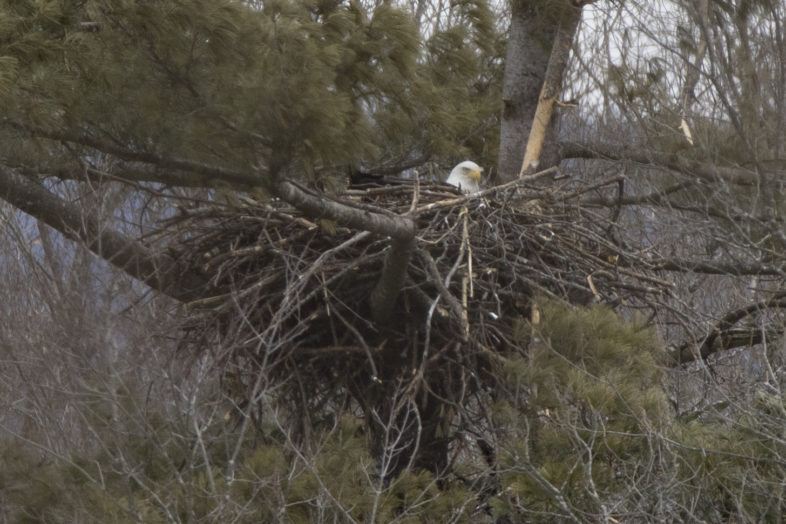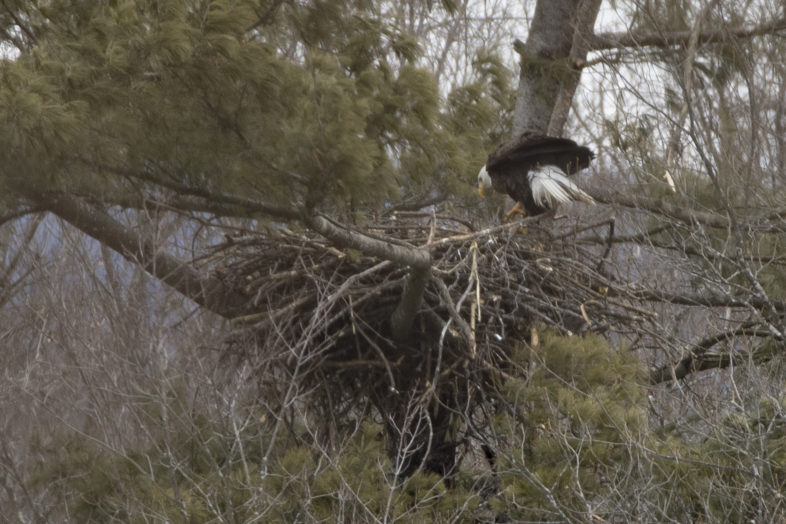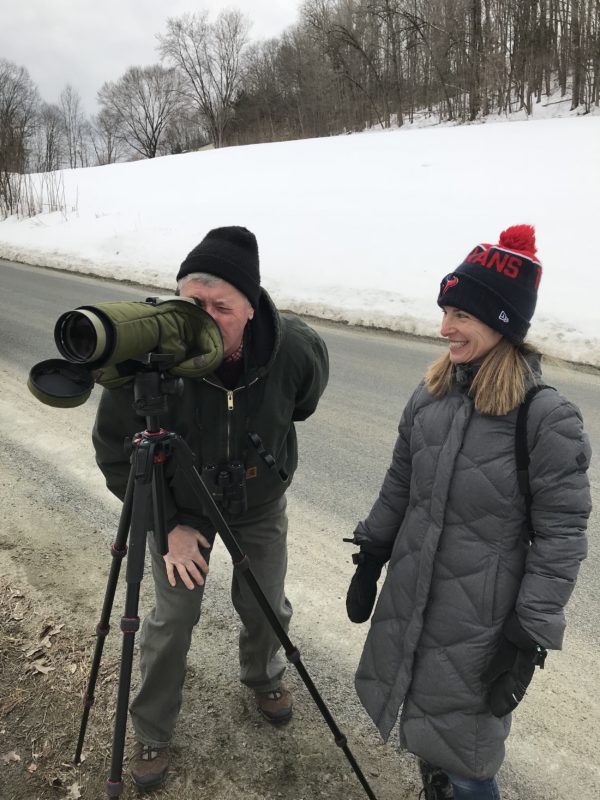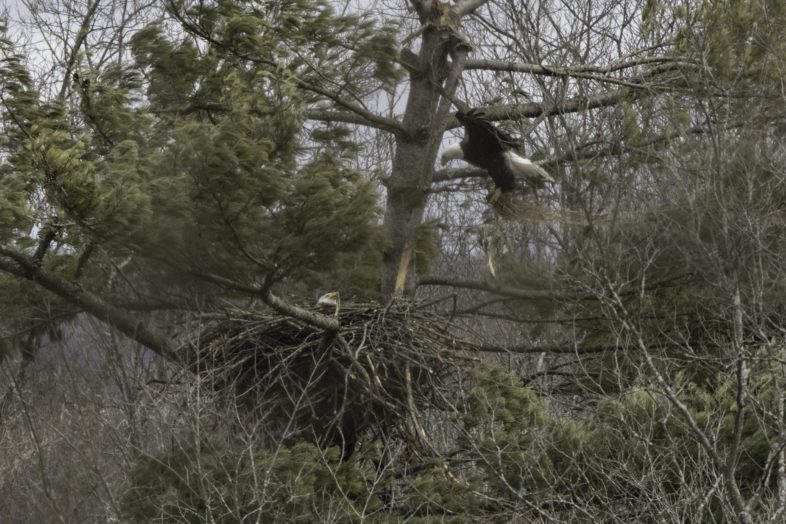Bald Eagle populations declined in the 20th century nationwide due to loss of habitat, disturbance to nests, and the effects of the pesticide DDT. Laws such as the Clean Water Act, the Endangered Species Act, and a ban on DDT have aided in the recovery of these magnificent birds.
In 2002, the first Vermont eagle nest was discovered after a 60-year absence. However, it wasn’t until 2008 when the first eagle fledgling successfully left its nest in Concord, and then two more nests were confirmed in 2009. Eagle numbers have been steadily increasing since then, giving hope to their full recovery in the near future.
Vermont’s Bald Eagle population continued its recovery in 2017. Twenty-one pairs of adult Bald Eagles successfully produced 35 young in Vermont in 2017, a modern-day record in the state according to the Vermont Fish & Wildlife Department. The species remains on Vermont’s endangered species list, but another strong year of growth has biologists hopeful for their continued recovery.
Wildlife biologist John Buck, of the Vermont Fish and Wildlife Department, joined VCE biologists Sara Zahendra and Kent McFarland at a Bald Eagle nest on the Connecticut River for a conversation about the personality, nesting habits and conservation success story of Bald Eagles in Vermont.
Listen to the show
MORE INFORMATION
- See hundreds of images shared with Vermont eBird.
- Audubon VT biologists Margaret Fowle and Mark LaBarr discussed the success of Bald Eagles on the WCAX program, Across The Fence.
- Bald eagle nesting trends.
- See a live map of bald eagle sightings in Vermont on Vermont eBird and add your sightings too.
- Learn more about bald eagles at All About Birds.
IMAGES FROM THE SHOW
Outdoor Radio is produced in collaboration with Vermont Public Radio with support from the Jack and Dorothy Byrne Foundation.





Great show!